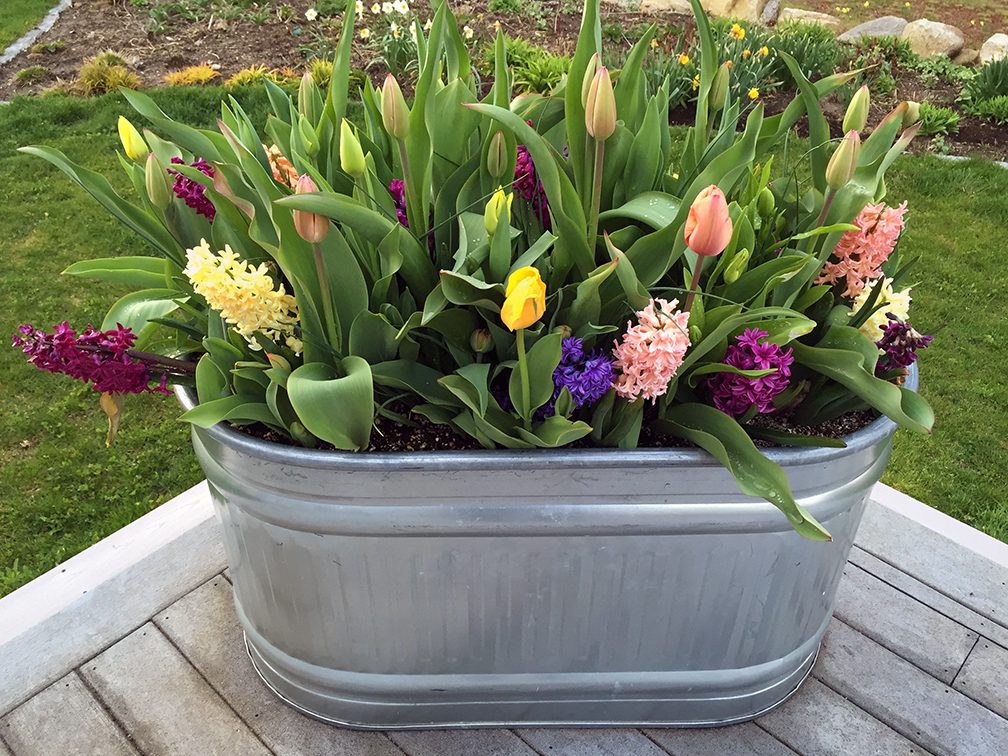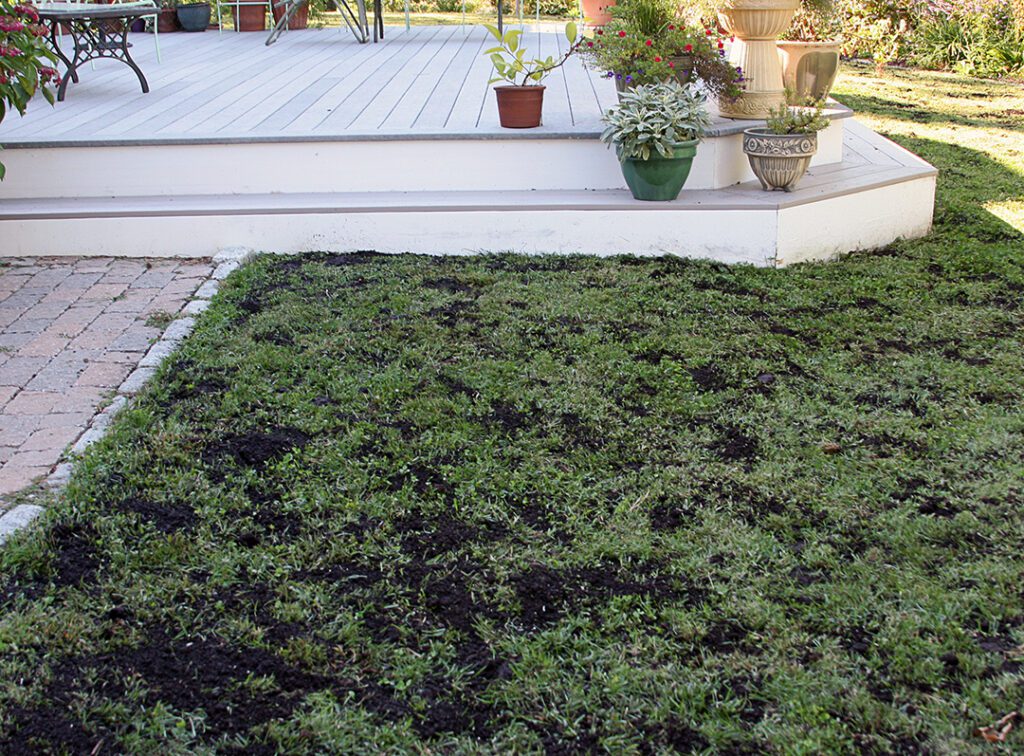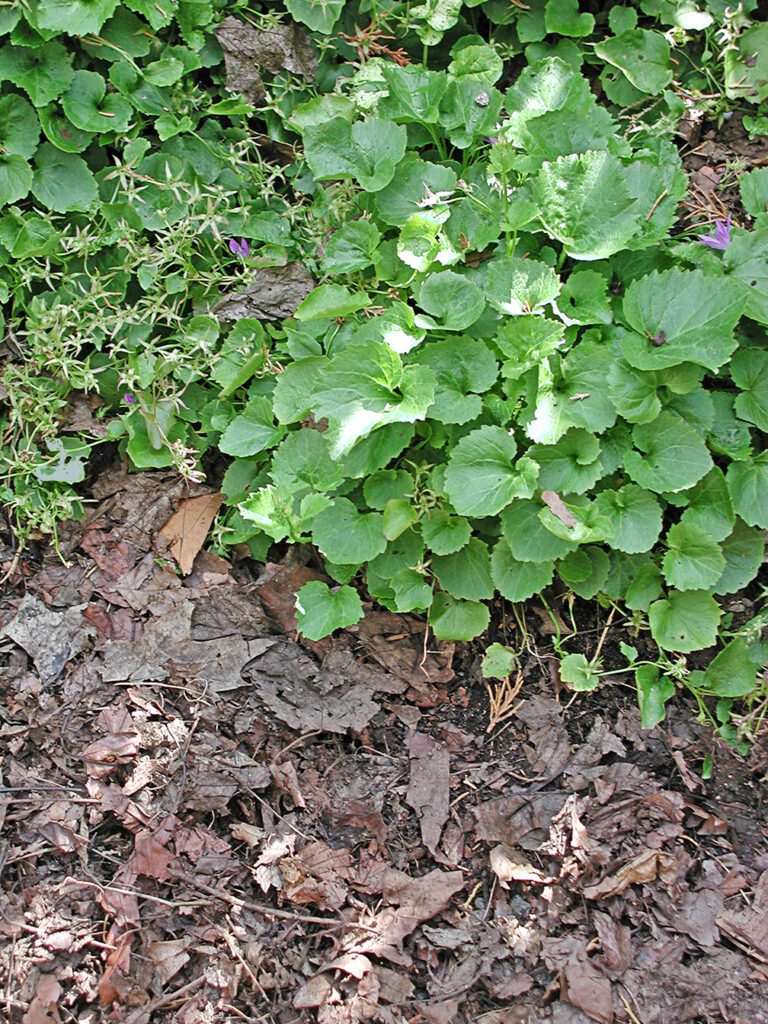Fall Into The Future
Fall Into The Future
In the fall many gardeners and home landscapers are anxious to wrap things up. We’ve coped with winter and gypsy moth larvae in the spring, seen drought-stressed plants all summer, and are watching our perennials brown and go to seed. So it’s natural that we’re ready to clear things out, dust off our hands and declare the lawn and garden season finished. But by doing so, we miss out on several opportunities to create wonderful landscapes in the future.
Here are three simple things that you can do this October that will reap great rewards next spring:
- Plant bulbs. An hour or two tucking bulbs in your garden results in weeks of enjoyment next spring. Bulbs delight us when we see them first appear and when they’re in full colorful bloom in the weeks to come. Planting them isn’t tricky: scatter some organic fertilizer such as Bulb-tone or Flower-tone over the area, plant the bulbs 3x deeper than their height, cover with soil and water well. “Dig, drop, done!” as the bulb growers say.
- Amend your soil. Apply an inch of compost over your vegetable or perennial beds in the fall. This can go right over a light layer of mulch that’s left from the spring. That compost can be covered with another inch of mulch in the following spring. Compost and organic mulches prevent soils from becoming compact.
- Top-dress your lawn with compost. This is one of the best ways to improve Cape Cod lawns, since so many of us have sandy soils.



Autumn is one of the nicest seasons on Cape Cod…take advantage of those crisp, sunny days to fall into the future!
15 Comments
Leave a Comment
Subscribe To Our Newsletter
Sign up for our weekly email about sales and events.

CL,
Thank you for the lesson on pruning last Sunday. I also attended last year. I think I am finally getting it. I have been afraid to make a cut and my wife complains that our shrubs are out of control. Your talk was very entertaining. This year I got to Country Gardens early and got a seat. This blog confirms my fall activities. I have already bought 2 bags of Narcissus (from Country Gardens). I always shred my leaves. I need to try the composted cow manure.
Bart
Bart – So glad you found the pruning class helpful! And I’m glad that you’ve been shredding your leaves and already buying bulbs. The pleasures of the fall season! Keep in touch.
C.L., I so value your wisdom, humor and your ways of expressing everything related to gardening. I regret not knowing about you sooner. Thankyouthankyou. Your Biggest Fan, Julia
You’re sweet, Julia. Thanks!
I loved your talk on Sunday. Also I try never to miss you on Saturdays on XTK. You are a gem. Wish I had known of you earlier in my so called gardening life. I try but not very good at it. And the landscapers I have had aren’t very good.
Did your trough have drainage holes or just filled completel filled with new soil?
These metal troughs have a drainage hole in the bottom. I have upside down flowerpots and a crate that fill the bottom 8″ and these are topped by two fabric smart pots. See photos here: http://wholelifegardening.com/blog/2013/05/29/smart-container-liners/
Unfortunately we were unable to attend the pruning seminar will you be doing another one?f
I always teach pruning in the fall but might consider a class in March or April next year…stay tuned to our events calendar for 2017 once it comes out!
Hi, Even with what I consider good drainage, my potted spring bulbs always rot. Would I have better luck if I potted them up, put the pots in sealed paper bags and stored them over winter in an unheated garage? In the spring I would slip the pots into the larger decorative pots.
It would be better if you potted them up in soil in plastic pots, keep outside through November and water, then move those into the unheated garage until the end of Feb or early March (depending on weather) – water when dry. Then in spring as they start breaking dormancy transplant to the larger containers outside.
Great tips for fall, and thanks, C.L! My question concerns fertilizing right over last season’s mulch. I have read somewhere that it is better to use twice as much fertilizer when you scatter it right on top of last season’s mulch, presumably because the thick mulch “absorbs” some of the fertilizer. Is this true? I use shredded pine bark mulch, and it varies between 1 inch – 2.5 inches thick around my shrubs and beds.
Emily
The idea that mulch “absorbs” the fertilizer and makes it unavailable to plants doesn’t make sense. Some of the nitrogen from the fertilizer might get used in the decomposition of the mulch, but that’s no reason to use twice as much of everything else. When you think about it, the mulch and fertilizer are both breaking down and amending the soil from the top down, which is how nature does it. So use the same amount of fertilizer you normally would and you can put it on top of the mulch. If you have mulch that is over 2″ high don’t spread more mulch on that are next spring – let it decompose. Ideally, mulch shouldn’t be thicker than 2″ at any time on the surface of your beds.
Great talk on pruning last Sunday. It was our first time are ding one of your events, but won’t be the last.
I love your trough full of hyacinths and tulips. Could you please tell me where I might be able to purchase the trough and Spart Pots.
Thanks so much.
Thank you, CL, for answering my question regarding fertilizer and mulch! Glad to have your opinion.